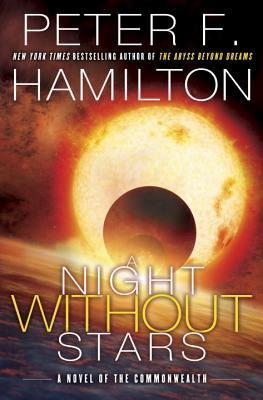
When I was a high school kid it was fashionable among the street thugs of Bucharest to use the insult "slave". I don't believe this was related to the history of slavery of the gipsy people in Romania's past, which was the ancestry of many influential such thugs, as it was something borrowed from the Americans, where that issue is much more aggravating. If I am correct, then the very use of the term denotes the way Romanians relate to other people, especially those who they perceive superior. Of course, if I am wrong, then I am guilty of the same thing, so QED, I guess?
After the Romanian Revolution against Communism (note the big R we use for that event, being the only real change we ever affected as a people) people from different countries came to assess the opportunities presented by a newly opened territory. One report that I saw with my own eyes was from a Jewish lawyer who said just that: Romania is filled with highly educated people who distrust their own government, laws and look poorly on local products and people. Instead, they revere national brands they never actually had any real recent contact with like the U.S. and West Germany, preferring ideas and things imported from there to things they could get or make locally. He concluded that it was a good place to invest in, since the quality of the local human resource was high and their expectations were low.
The Revolution was in 1989, 32 years ago, but the mentality is still mostly there, as even the people who teach the children of today are still of the generation that lived through that era. It is funny to discuss education with a Romanian, they all complain about how bad it is related to how it was, because children aren't fed the same amount of unprocessed information that was the mainstay of the Communist education. They are rarely complaining about the lack of technological advancement in schools or of skills that are useful in real life or about how children are not taught how to be passionate and happy. Even so, they don't do anything at all to change anything. The only measure of control that parents have is to which school to pay people for their kids to get into and, more recently, to which expensive private school to send their kids in order to give them what they see as the proper education.
The heroes of the Romanians are not the successful entrepreneurs. The media rarely mentions them and then it is mostly because they were paid for by those people. In case an average Romanian hears about a successful Romanian businessman, it is assumed they had connections with the people who ruled the country during the Communist era. Since they started with money and/or influence, their success is surely undeserved. Funny enough, people like doctors are not heroes either, because in Romania people usually have to bribe medical personnel to get any of the treatments that are theoretically free. Even when they go to private clinics the instinct is to pay extra to appease the doctors who, in their natural state, would try to kill them. This is, of course, caused by a systemic underfunding of medicine and by the endemic corruption which sees any funds misused or embezzled. Because of this, a medic who saves lives - even when they refuse to accept any extra money, is not a hero, but just incompetent or parasitic. Heroes are not the people who left the country to get abused as cheap labor abroad either. People who went to Spain to pick strawberries or to Greece to pick olives are just poor uneducated people who are clearly poor stock, perhaps even gipsy people. They deserve no respect. Same for prostitutes, who are universally despised as shaming the country and at the same time praised for being amongst the most beautiful of prostitutes.
There was once a news report about people going to pick strawberries on TV and the mother of a girl going to Spain explained how she taught her daughter to conform to whatever they say there, to not antagonize the boss. Just work hard and make money and do whatever he says. This was her mother!
Police people are not heroic, either. They don't protect the citizens, they enforce unreasonable rules. Politicians are not heroes, they are either the absolute evil or the person who is opposing the absolute evil, which makes them slightly less evil. The few situations where political fervor is so high that someone becomes close to being considered heroic, their efforts pale in comparison with the expectations put on them, which of course proves they were evil all along.
No, the heroes of the Romanians are the hard working people who work for other people. Great theoreticians, the army of Romanian software developers that left the country to work for multinational corporations, any doctor who would be despised in the country is a hero when working abroad, engineers of all kinds, any white collar job, even people working in construction - which is somehow seen as a clean job. With the caveat that they must not be gipsy or poor stock, they surely left the country to thieve and steal and they are shameful to us all. If people "from the developed countries" (this is a phrase still very much in use in relation to the Western countries) praise a hard working Romanian, the entire country breaths a collective awwh of pride, like dogs petted on their heads for being good boys. "You see?", they say, "Now they see what we are made of!".
One obvious exception is any managerial job. If you are a manager, you actually do little to nothing, you are an oppressor, not a hard working individual. Even if you got there through your own efforts (and didn't rely on the people you knew or money you had) you have a dirty job that deserves no respect. Unless you are related to the person who judges the situation, in which case you are the pride of the family.
The biggest heroes are of course great athletes, especially if they are part of an international team. If a Romanian is part of a of German football team, the entire country believes he would be the reason why Germans are good at football. Of course, people doing great things in Romanian sports are usually seen as part of the endemic corruption in Romanian sports. They still get the status of heroes, but they are always on trial and any mistake will be fatal to their reputation. An interesting exception is Simona Halep, which is the greatest Romanian hero of all, because she goes to international Tennis competitions and wins some of them against the best international tennis players in the world! The fact that she is reasonably good looking doesn't hurt either. She is of the people for the people.
There are great Romanian writers, for example, but we only value the dead ones. We learn in school about great Eminescu, or Rebreanu, or Blaga. The more poetic, the better. The more obtuse the better. And in order to verify if children really read these big greats, we ask them to write commentaries. And kids just read existing commentaries and summarize them. With the advent of Google and AI, it's impossible to not automate this, since it requires the lowest level of human inventivity. Current writers are poor unknown quantities, always shorted when negotiating with local publishers. And no one reads books anymore anyway, what are they doing? There are great Romanian actors and filmmakers, but few people actually bother to watch Romanian productions. We occasionally see films winning some international prize somewhere and it's usually some drab and depressing drama about people being treated as slaves and behaving like one.
All these point to a mentality that can only be called "slave mentality". Anything Romanian is poor quality, therefore we export raw material and import the very things made from it. As an example, we export a lot of apples and import a lot of apple juice. The opportunities for Romanians are to either find a good job in Romania or - much better - a good job abroad. To have a company, make your own money, employ other people, is still seen as something dirty. Romanians are not educated on how to make, keep or invest money, instead they are instructed on which jobs are better paid. When I was a child, I knew that I should go for being a medic or a lawyer. Now kids are probably taught to try to go into software. No parent would ever tell a kid to think freely, pursue their dreams and try to make something of themselves through their own strength unless it first starts with being employed somewhere. Surely, dreams can wait, they say, all sad and depressed.
Funny enough, people who somehow get to be business owners, employers or managers many times behave like slave owners. This is also slave mentality: slaves don't dream of being free, but of becoming masters themselves. This sadly also encourages Romanian employees to feel that anything Romanian sucks. In my career the most unprofessional, choleric, petty and unethical employers were Romanians. With small exceptions that I will attribute to mental illness and not national culture.
Even when we go on holidays, the biggest complaint we have is "it was nice, but there were too many Romanians there". When we were most complaining about how poor our country was, right after the big R, we were the country importing most expensive cars and high end smartphones.
This is a sad sad cycle, Romania is and will continue to be a nation of employees. Nothing in our culture impresses the importance of self actualization, of generating and defending our own values, of pushing to get ahead and then actually pulling people with you. Nothing teaches us to band together under those values and fight for them. From all of the cultures we've had contact with, which mostly invaded our country and enslaved us for most of our history, we only learned to slave or enslave others.
We had and we still have a lot of potential, smart people, hard working people, but is that relevant without a set of values? I personally feel that the Romanians abroad impress their employers, but also their employees or their subordinates and their friends, not by being hard working, but by being open and by not being complete assholes, by being kind and ethical. It hurts me to see how American we have become, partially because of the malevolent influence of Russia, but instead of going for the American ideal declarations of freedom and equality, we emulate the American actions of selfish individuality and status driven inequality. They also pushed this idea that somehow you are either a Capitalist or a Communist, master or slave. This just in case you are not a Fascist or a Terrorist, which makes you gipsy or poor stock.
Let's abandon this obsolete thinking of masters and slaves and instead think of the others as simply people. Your employer is your partner not your owner, people from other nations are still just people, dreaming is still OK and when you reach the top, give yourself a pat on the back and help others up. Find something you care about and do it. There is nothing on the other end. Every moment is not the first day of your life, but the very last. Make it worthwhile.














